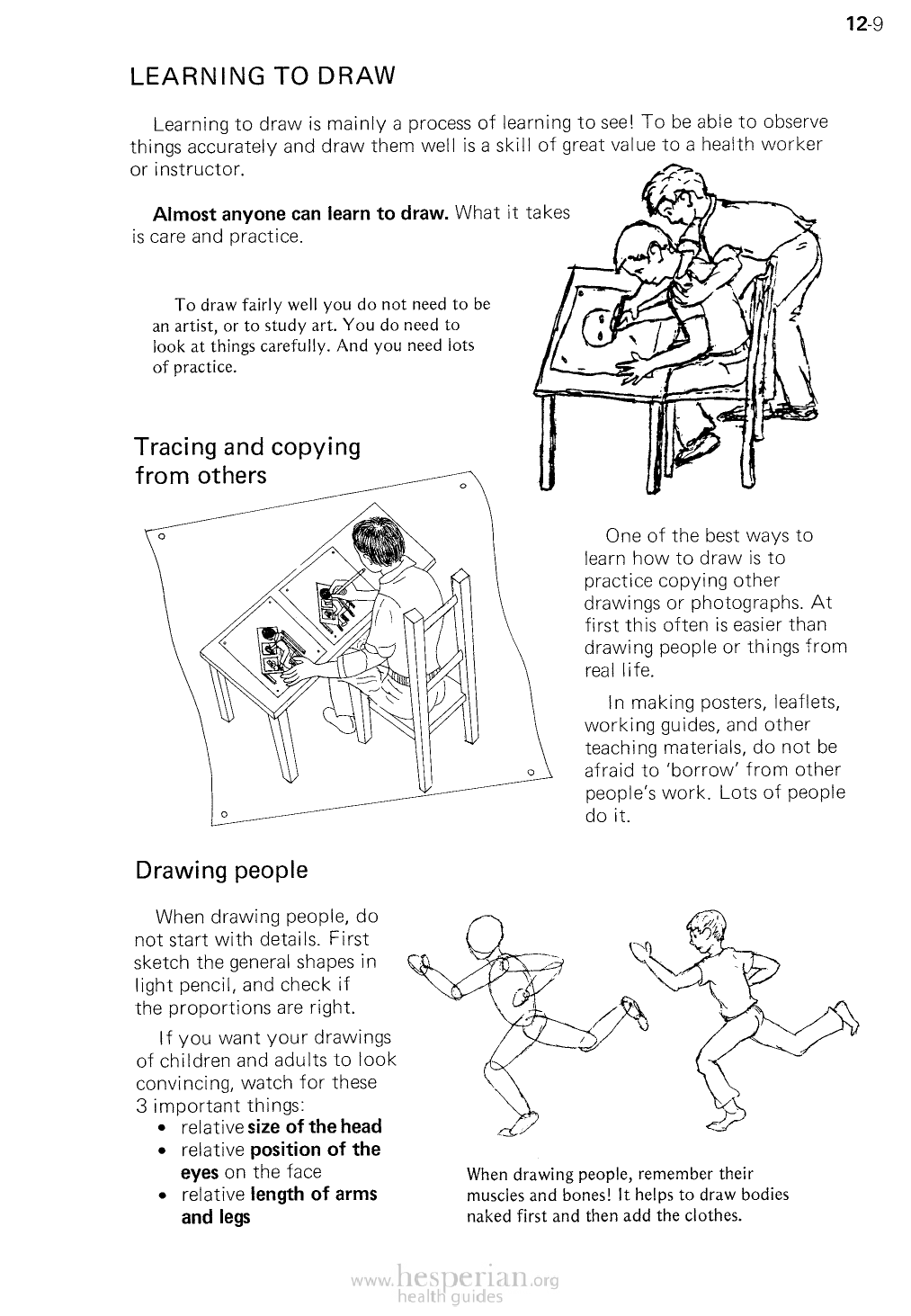
12-9
LEARNING TO DRAW
Learning to draw is mainly a process of learning to see! To be able to observe
things accurately and draw them well is a skill of great value to a health worker or
instructor.
Almost anyone can learn to draw. What it
takes is care and practice.
To draw fairly well you do not need to
be an artist, or to study art. You do need to
look at things carefully. And you need lots
of practice.
Tracing and copying
from others
Drawing people
When drawing people, do
not start with details. First
sketch the general shapes in
light pencil, and check if the
proportions are right.
If you want your drawings
of children and adults to look
convincing, watch for these 3
important things:
• relative size of the head
• relative position of the
eyes on the face
• relative length of arms and
legs
One of the best ways
to learn how to draw is
to practice copying other
drawings or photographs. At
first this often is easier than
drawing people or things
from real life.
In making posters, leaflets,
working guides, and other
teaching materials, do not be
afraid to ‘borrow’ from other
people’s work. Lots of people
do it.
When drawing people, remember their
muscles and bones! It helps to draw bodies
naked first and then add the clothes.